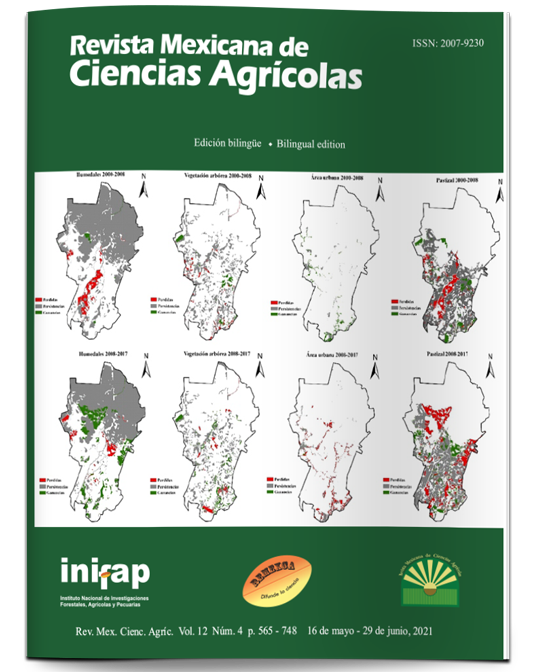Induction of the defense response of onion plants in interaction with Trichoderma asperellum and Alternaria porri
DOI:
https://doi.org/10.29312/remexca.v12i4.2683Keywords:
antioxidant enzymes, chitinases, glucanasesAbstract
Alternaria porri causes purple blotch disease in onion and beneficial fungi of the genus Trichoderma can be used for its biocontrol, but knowledge of the mechanisms of the defense response in the interaction of onion plants with Trichoderma and A. porri is limited. In this study, the activity of defense enzymes: glucanases, chitinases, catalases and peroxidases in onion plants in the interaction with the isolate To of Trichoderma asperellum and A. porri was evaluated. The isolate To of T. asperellum was selected because it stood out for its antagonistic activity against A. porri compared to that of another isolate of T. asperellum (TC1 and TC2) and of T. harzianum and T. atroviridae. With the method of dual culture and cellophane paper, the isolate To inhibited the mycelial growth of A. porri in 56 and 53%, respectively and showed mycoparasitic activity. The activity of enzymes depended on the interaction of onion plants with the isolate To of T. asperellum and A. porri. The activity of glucanases and chitinases increased with the isolate of T. asperellum and was repressed with A. porri. The activity of catalases was induced with A. porri and the activity of peroxidases increased with both microorganisms. In conclusion, the defense mechanisms of onion plants are regulated by the interaction with T. asperellum and A. porri and both microorganisms; aspect to be consider in the biocontrol of onion pathogens with the isolate To of T. asperellum.
Downloads
Downloads
Published
How to Cite
Issue
Section
License
The authors who publish in Revista Mexicana de Ciencias Agrícolas accept the following conditions:
In accordance with copyright laws, Revista Mexicana de Ciencias Agrícolas recognizes and respects the authors’ moral right and ownership of property rights which will be transferred to the journal for dissemination in open access. Invariably, all the authors have to sign a letter of transfer of property rights and of originality of the article to Instituto Nacional de Investigaciones Forestales, Agrícolas y Pecuarias (INIFAP) [National Institute of Forestry, Agricultural and Livestock Research]. The author(s) must pay a fee for the reception of articles before proceeding to editorial review.
All the texts published by Revista Mexicana de Ciencias Agrícolas —with no exception— are distributed under a Creative Commons License Attribution-NonCommercial 4.0 International (CC BY-NC 4.0), which allows third parties to use the publication as long as the work’s authorship and its first publication in this journal are mentioned.
The author(s) can enter into independent and additional contractual agreements for the nonexclusive distribution of the version of the article published in Revista Mexicana de Ciencias Agrícolas (for example include it into an institutional repository or publish it in a book) as long as it is clearly and explicitly indicated that the work was published for the first time in Revista Mexicana de Ciencias Agrícolas.
For all the above, the authors shall send the Letter-transfer of Property Rights for the first publication duly filled in and signed by the author(s). This form must be sent as a PDF file to: revista_atm@yahoo.com.mx; cienciasagricola@inifap.gob.mx; remexca2017@gmail.
This work is licensed under a Creative Commons Attribution-Noncommercial 4.0 International license.



